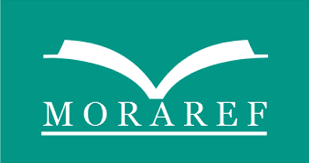The Relationship Between Time Management and Workload on Job Stress of High School Teachers in East Jakarta with Social Support as an Intervening Variable
Keywords:
Time Management, Workload, Social Support, Job StressAbstract
This quantitative study aims to analyze the effect of Time Management and Workload on Job Stress among teachers, with Social Support as an intervening variable. Data were collected through a questionnaire survey distributed to 100 high school teachers in East Jakarta and analyzed using the Partial Least Squares-Structural Equation Modeling (PLS-SEM) method. The outer model test results indicate that all indicators are valid and reliable, as shown by a loading factor above 0.70, an Average Variance Extracted (AVE) value above 0.50, and Composite Reliability exceeding 0.90. The R-Square values for the Social Support and Job Stress constructs are 0.897 and 0.886, respectively, indicating that both constructs can be comprehensively explained by the exogenous variables in the model. The key findings reveal that Workload and Time Management have a positive and significant effect on Job Stress, both directly and through Social Support. Interestingly, Social Support also exhibits a positive relationship with Job Stress, which may indicate increased expectations or role demands on teachers. This suggests that, rather than alleviating stress, a high level of social support may inadvertently increase psychological burdens. This study recommends further examination of the quality and type of social support provided to ensure that time management strategies and workload management effectively reduce teachers' Job Stress.
Downloads
References
Agtovia, F., Herawati, Y., & Nasution, I. H. R. (2024). Statistik berbasis komputer untuk penelitian (Panduan praktis menggunakan SPSS untuk penelitian dan skripsi). Hei Publishing.
Chen, J. (2019). Research review on teacher stress and coping strategies in China. Social Sciences & Humanities Open, 1(1), 100–113.
Cohen, S., & Wills, T. A. (1985). Stress, social support, and the buffering hypothesis. Psychological Bulletin, 98(2), 310–357.
Ghozali, I., & Latan, H. (n.d.). Partial least square: Konsep, teknik dan aplikasi Smart PLS 2.0 M3. Universitas Diponegoro.
Handoko. (2017). Manajemen sumber daya manusia. Bumi Aksara.
Hasibuan, M. (2017). Manajemen sumber daya manusia. Bumi Aksara.
Ismail, H., & Daud, N. (2016). Time management among teachers: The relationship with work stress. International Journal of Education, 4(2), 45–52.
Johnstone, R., Hendrickx, B., & Griffiths, T. (2020). Teacher stress and student achievement: A multi-level analysis. Journal of Educational Psychology, 112(6), 1132–1145.
Kahn, J. H., Schneider, K. T., Jenkins-Henkelman, T. M., & Moyle, L. L. (2006). Emotional social support and job burnout among high-school teachers. Social Psychology of Education, 9(3), 229–244.
Kementerian Pendidikan, Kebudayaan, Riset, dan Teknologi. (2021). Data dan statistik pendidikan di Indonesia. Jakarta: Kemendikbudristek.
Mangkunegara, A. A. P. (2011). Manajemen sumber daya manusia perusahaan. Remaja Rosdakarya.
Nuryati, S., Frimayasa, A., & Arief, Z. (2024). The influence of market orientation and innovation on business performance in MSMEs through competitive advantage. Jurnal Scientia, 13(1), 59–68.
Sedarmayanti. (2016). Manajemen sumber daya manusia reformasi birokrasi dan manajemen pegawai negeri sipil. PT. Refika Aditama.
Siboro, S. F., Ferdiyanto, Y. A., & Frimayasa, A. (2025). The role of financial literacy and technology readiness in encouraging the use of fintech for financial planning among Generation Z. Journal of Financial Planning and Fintech, 5(2).
Simanjuntak, M. F., & Frimayasa, A. (2023). Pengaruh beban kerja dan kepuasan kerja terhadap kinerja karyawan pada PT Global Arrow Jakarta. Jurnal Manajemen & Kinerja, 2(3).
Slameto. (n.d.). Belajar dan faktor-faktor yang mempengaruhinya. Rineka Cipta.
Suherman, A. (2021). The effect of human agility, digital literature, curriculum and the role of the family on the interest of the millennial generation in entrepreneurship through capabilities as intervening variables. Journal of Economics and Business Letters, 1(2), 4-17.














